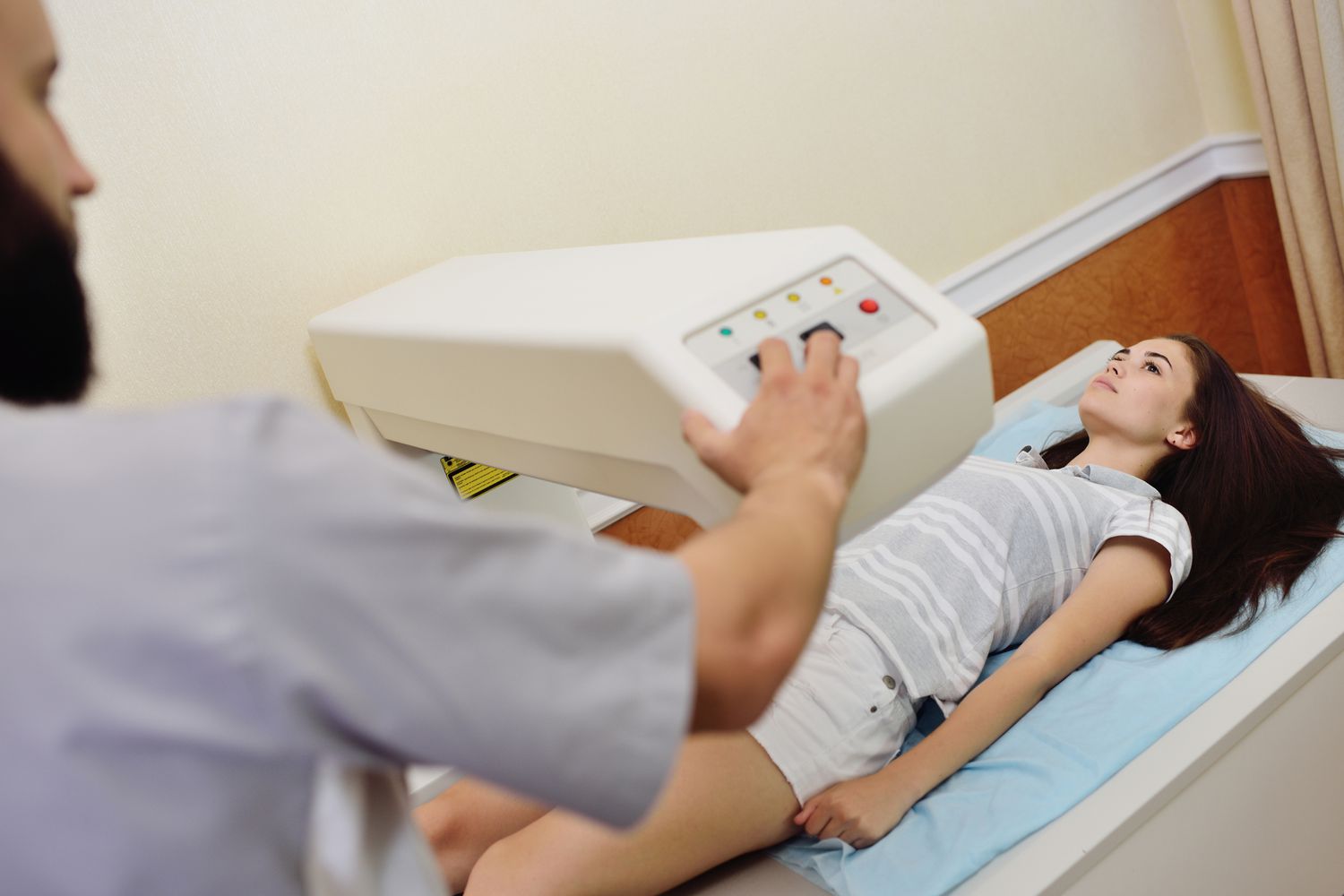A technique involving the use of X-ray beams at two distinct energy levels to assess bone health, such as bone density, is known as the DEXA scan. These scans have given a point-blank measure of bone density that helps us to assess the condition of bones and their strength. Let’s examine how medical imaging, particularly Dexa scans, influences the entire process from diagnosis to treatment.
- Diagnosis of Bone Health Issues
Dexa tests or scans are generally intended to have BMD calculations. This imaging method is needed to assess the mass of bones, and since it is the most common condition in aging, it is also the most important one. The procedure of the Dexa scan takes just a few seconds, is not invasive, and the patient doesn’t feel any pain as they lie still on a table with the machine moving over their body.
It generates two varieties of X-rays with distinct energy peaks, with the softer type mostly absorbed by the bone and only a smaller portion penetrating soft tissue. The fraction of X-ray passing through the body unabsorbed is measured and calculated further for the measurement of bone density.
The results of these tests are compared against the standard average set for bones of a young adult or someone of the same age and sex to find out if the patient has healthy bones, thinner bones or osteoporosis.
With the precision and detail that Dexa scans create, even the smallest changes in bone density can now be detected by them, and this helps doctors diagnose bone deterioration early to prevent severe fractures.
- Risk Assessment for Future Bone Issues
The Dexa scans are important not only in the determination of bone mineral density but also in evaluating fracture risk. This will be especially beneficial for those at risk levels, for example, postmenopausal women, older people, or people on long-term corticosteroid therapy alike. The computerised scan report shows you a number called a T-score that assesses bone density compared to that of a healthy young adult at their peak bone density.
The symptom of osteoporosis is downgraded in the bone mass. i.e. -1 to -2.5 is unhealthy bone matter. -2.5 downward is the sign of osteoporosis. These rates are crucial in doctors’ diagnostics of osteoporosis and in determining an individual’s risk of bone fractures.
However, this process is vital when our target is to be proactive in reducing the risk of a bone injury onset by determining the best time to start some preventive treatments, lifestyle modifications, or even dietary restructuring that is aimed at strengthening the bones before any serious damage onset.
- Tailored Treatment Decisions
Dexa scans have critical relevance in the management of osteoporosis and other bone-degenerative diseases through the elaboration of treatment plans. Decisions about treatment are based on the image capacity taken from the DEXA scan, which provides information about bone density. Therefore, a patient’s level of bone density deterioration could determine which drug they will get.
For example, such patients could be given bisphosphonates that help to prevent bone resorption and decrease the possibility of fractures. In cases of less severe loss of bone structure, doctors can suggest you increase your calcium intake through diet, vitamin D supplements, and physical activity to strengthen bone structure.
Dexa scans afford the exact data the physician needs to map a bone-specific treatment, which is based on the individual’s health condition.
- Monitoring Treatment Efficacy
In the case of patients under treatment for osteoporosis, Dexa scans at given intervals are fundamental for ensuring treatment is working. Such follow-up scans can clearly have a role to play in determining if an improvement, stabilisation or deteriorating bone density is happening to the patient.
Adjustments to treatment plans, whether they involve changing medications, increasing supplements, or altering physical activity regimens, are often made based on these follow-up Dexa results.
- Implications for Broader Research and Guidelines
Beyond individual patient diagnosis and treatment, the Dexa test plays a vital role in broader medical research. Large-scale data collected from Dexa scans can help understand population health trends, variations in bone health across different demographics, and the efficacy of various treatment regimens.
This information is essential for developing public health policies and clinical guidelines related to bone health, potentially leading to better preventive measures, treatment protocols, and healthcare outcomes on a global scale.
Navigating Your Local X-Ray Options
- Accreditation and Expertise
Choosing X-ray service facilities accredited by reputable bodies is crucial. These accreditations allow the facility to present itself as a facility that strives towards the fulfilment of high standards of care and quality. For quicker outcomes, when seeking a nearby facility, utilise the internet to search XRay near me and verify that the staff, including radiologists and technicians, have undergone sufficient training and boast substantial experience by reviewing online feedback from previous customers. This greatly influences the safety and reliability of the services provided.
- Patient Feedback and Technology
Try to figure out the quality of staff work and professionalism by reading the reviews and ratings of former patients. While X-rays are important for the initial diagnostic process, it’s also imperative to ensure the radiology unit implements the newest X-ray technology that offers better image quality and low radiation, thus leading to more precise outcomes.
- Insurance, Accessibility, and Follow-up
After searching the service for XRay near me, schedule your appointment. However, first, ensure that your health insurance is accepted at the location and determine the estimated out-of-pocket costs. Take into account the business hours that the facility will operate and its distance from public transport as well as the availability of parking space, especially if you are pushed for time.
Furthermore, attending institutions can guarantee prompt investigation services and that the primary doctor is provided with the results as soon as possible so that they won’t have to wait for the results before taking any further steps.
Final Thoughts
Dexa scans are a must-have tool for doctors nowadays in ascertaining and managing conditions pertaining to the health of the skeletal system. These instruments help doctors get commensurate and veritable results of bone density, which is a crucial tool in the early diagnosis, risk assessment, treatment plan formulation and management of the disease.
As technology progresses, leading service providers such as CareScan recognise the importance of Dexa scans in clinical environments. They not only deliver top-notch service but also open new possibilities for physicians to diagnose and treat osteoporosis and other bone density problems, thereby enhancing the quality of life for at-risk individuals.










